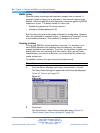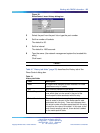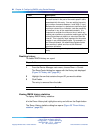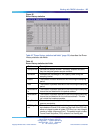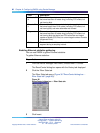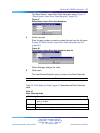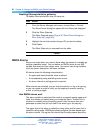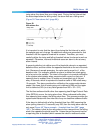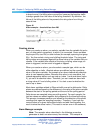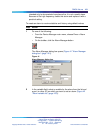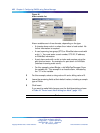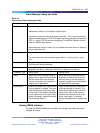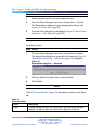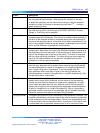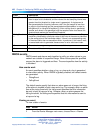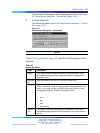
100 Chapter 6 Configur ing RMON using Device Manager
to drop to zero), the falling alarm cannot fire, because the baseline traffic
is always greater than the value of the falling threshold. By definition, the
failure of the falling alarm to fire prevents the rising alarm from firing a
second time.
Figure 40
Alarm example -- threshold less than 260
Creating alarms
When you create an alarm, you select a variable from the variable list and a
port, or other switch component, to which it is connected. Some variables
require port IDs, card IDs, or other indices (for example, spanning tree group
IDs). You then select a rising and a falling threshold value. The rising and
falling values are compared against the actual value of the variable that you
choose. If the variable falls outside of the rising or falling value range, an
alarm is triggered, and an event is logged or trapped.
When you create an alarm, you also select a sample type, which can be
either absolute or delta. Absolute alarms are defined on the cumulative
value of the alarm variable. An example of an alarm defined with absolute
value is card operating status. Because this value is not cumulative, but
instead represents states, such as card up (value 1) and card down (value
2), you set it for absolute value. Therefore, you can create an alarm with
a rising value of 2 and a falling value of 1 to alert a user to whether the
card is up or down.
Most alarm variables related to Ethernet traffic are set to delta value. Delta
alarms are defined based on the difference in the value of the alarm variable
between the start of the polling period and the end of the polling per iod.
Delta alarms are sampled twice per polling period. For each sample, the
last two values are added together and compared to the threshold values.
This process increases precision and allows for the detection of threshold
crossings that span the sampling boundary. Therefore, if you track the
current values of a given delta-valued alarm and add them together, the
result is twice the actual value. (This result is not an error in the software.)
Alarm Manager example
Note: The example alarm described in the following procedure
generates at least one alarm every five minutes. The example is
Nortel Ethernet Switch 460/470
Configuration — System Monitoring
NN47210-503 01.01 Standard
3.7 22 February 2007
Copyright © 2005-2007, Nortel Networks Nortel Networks Confidential
.



